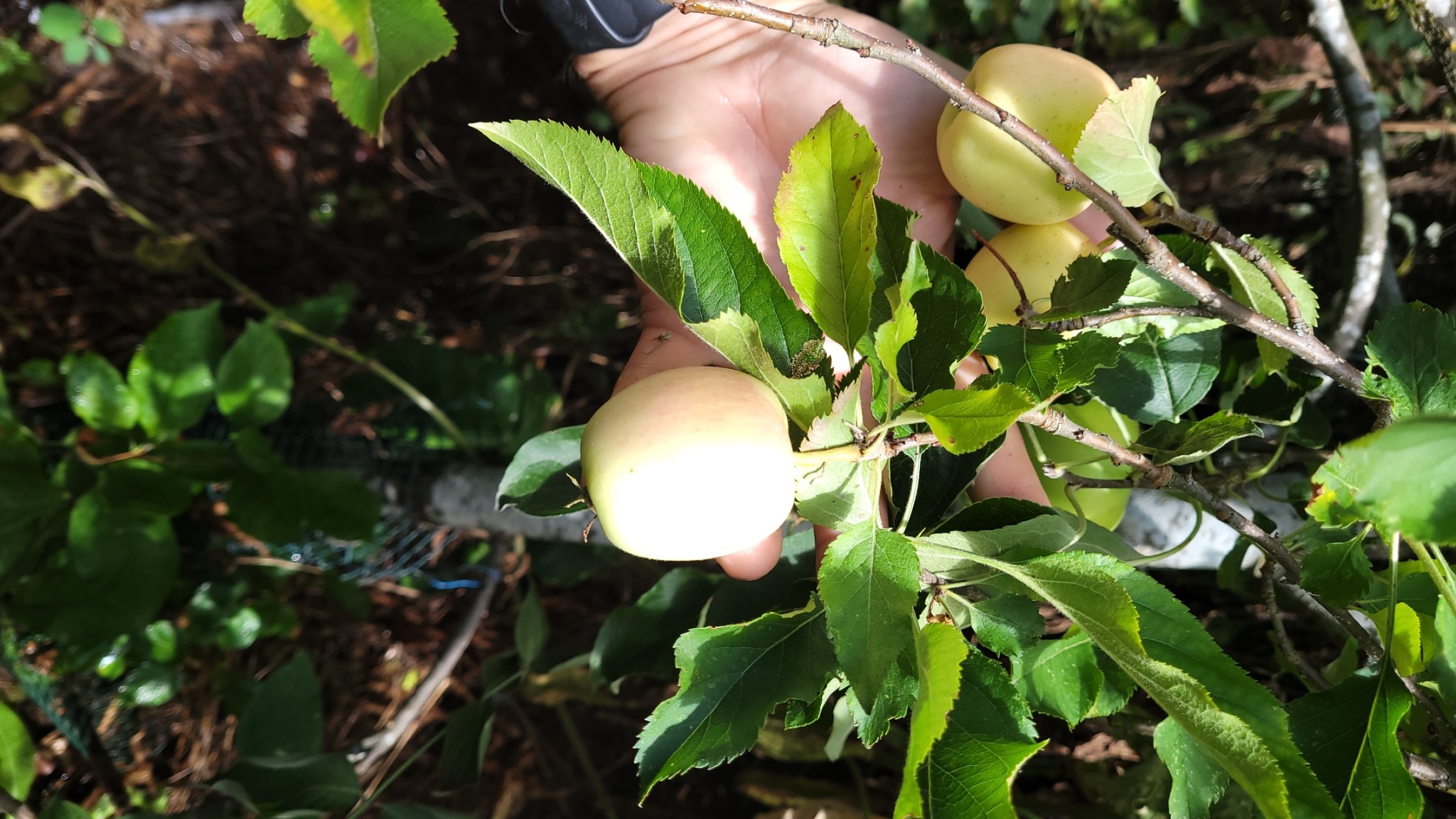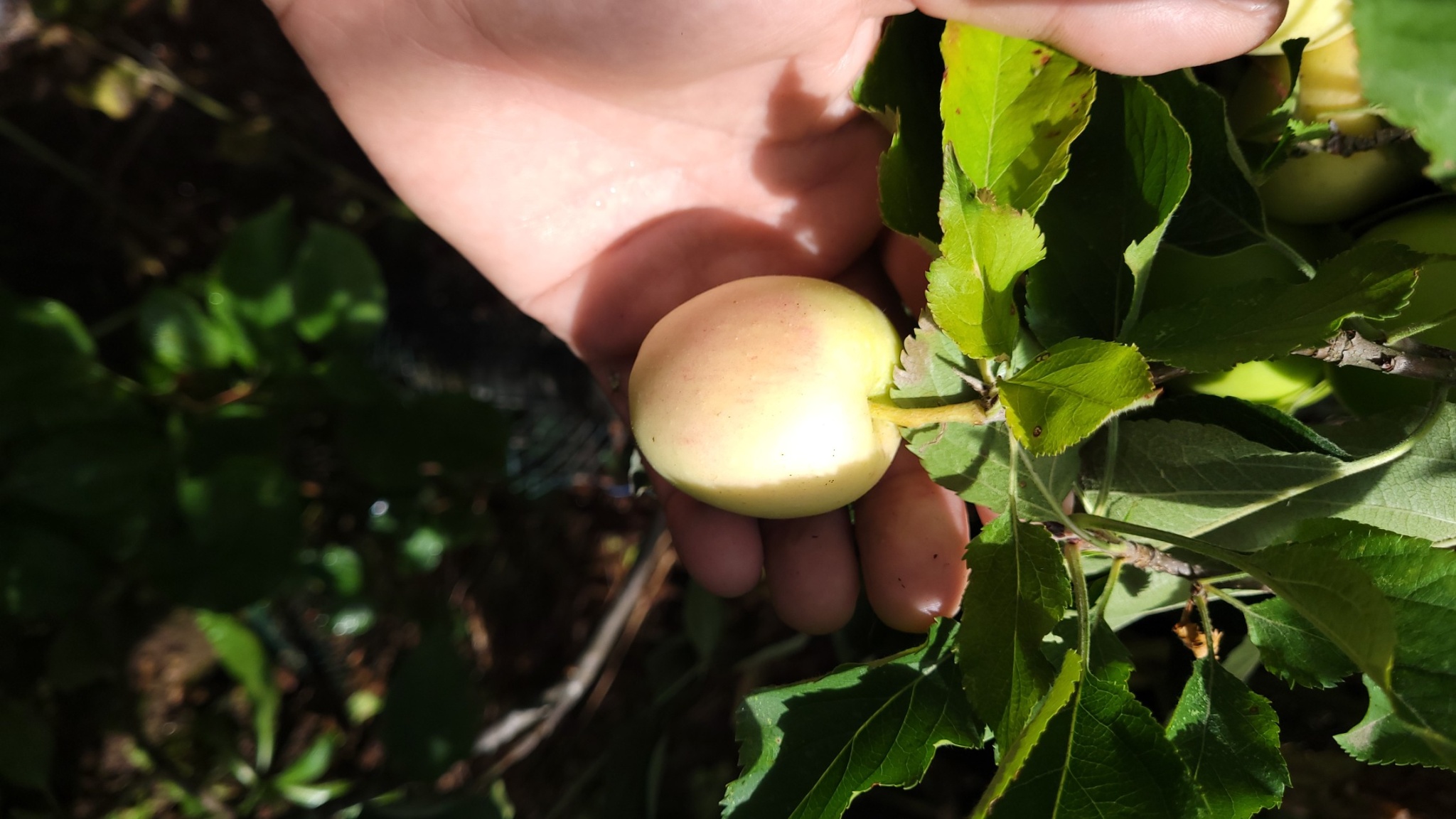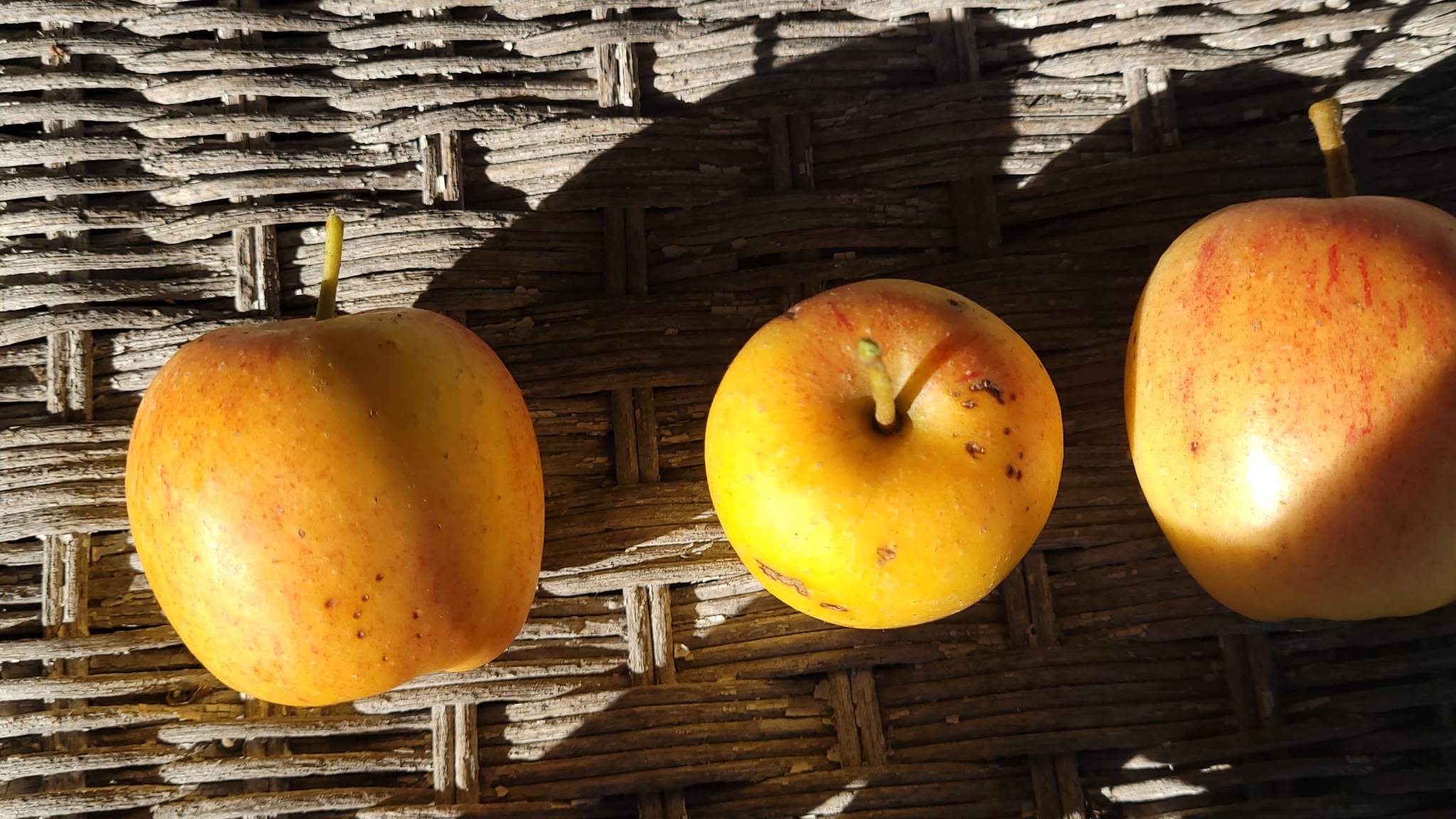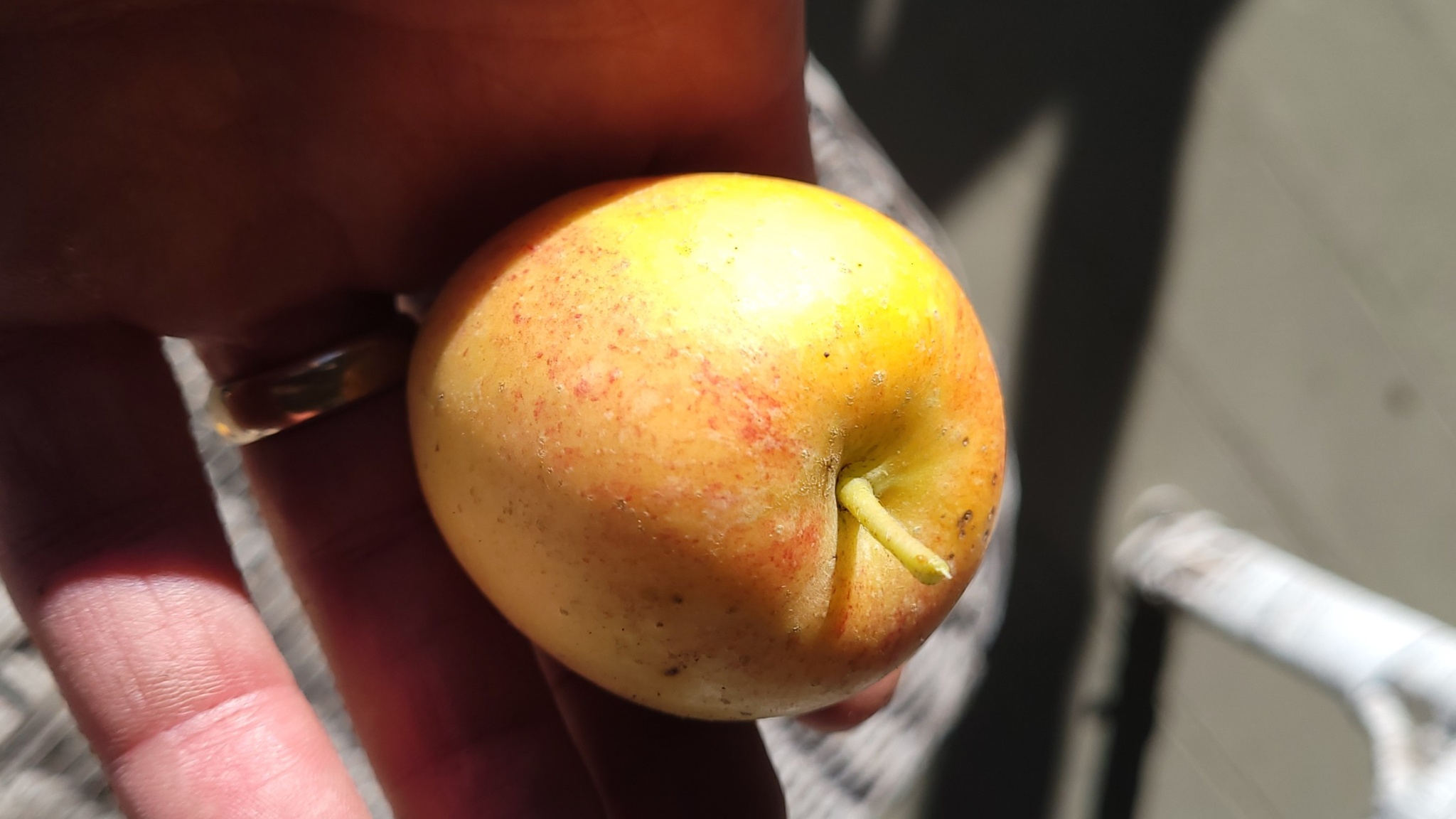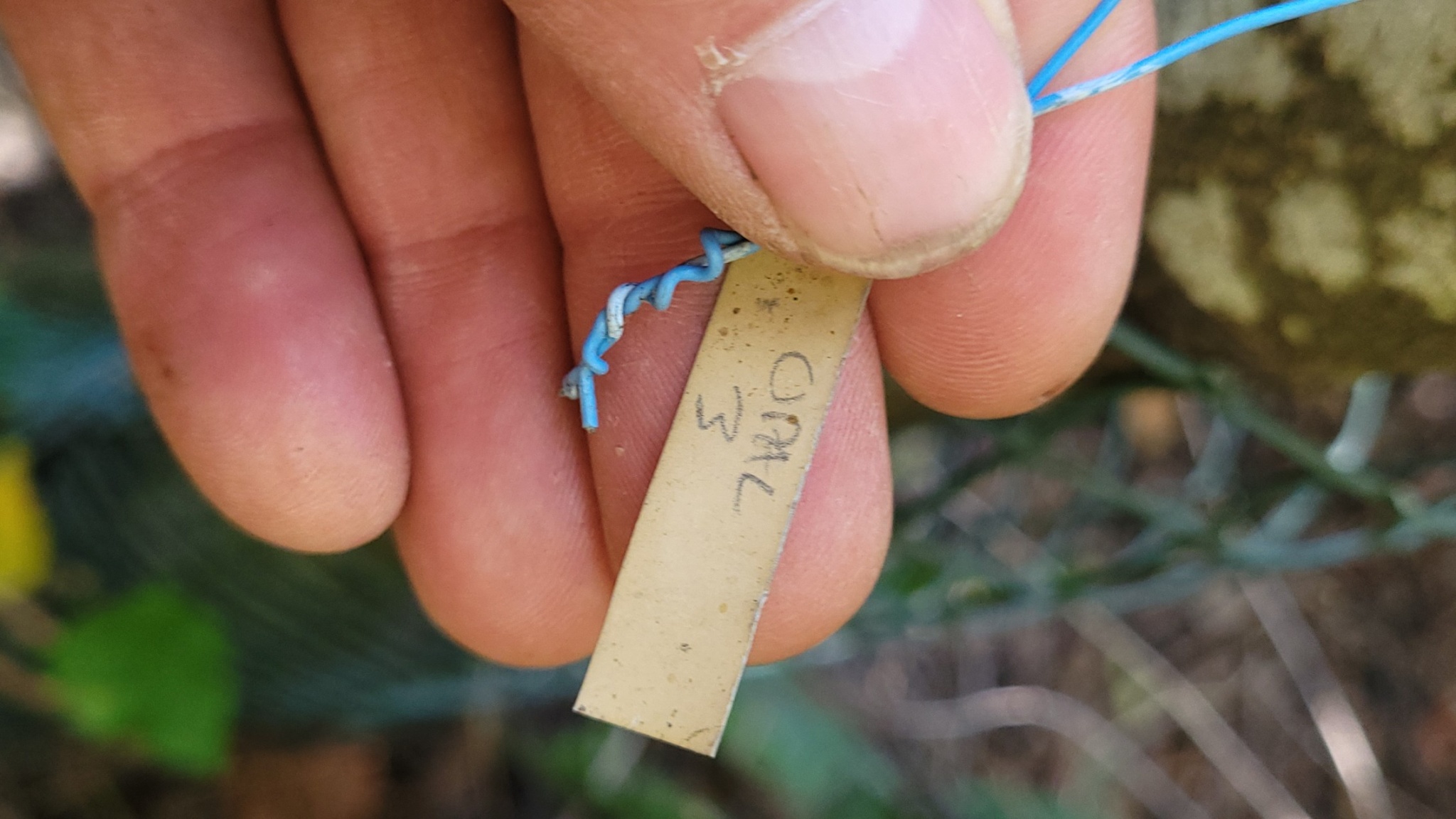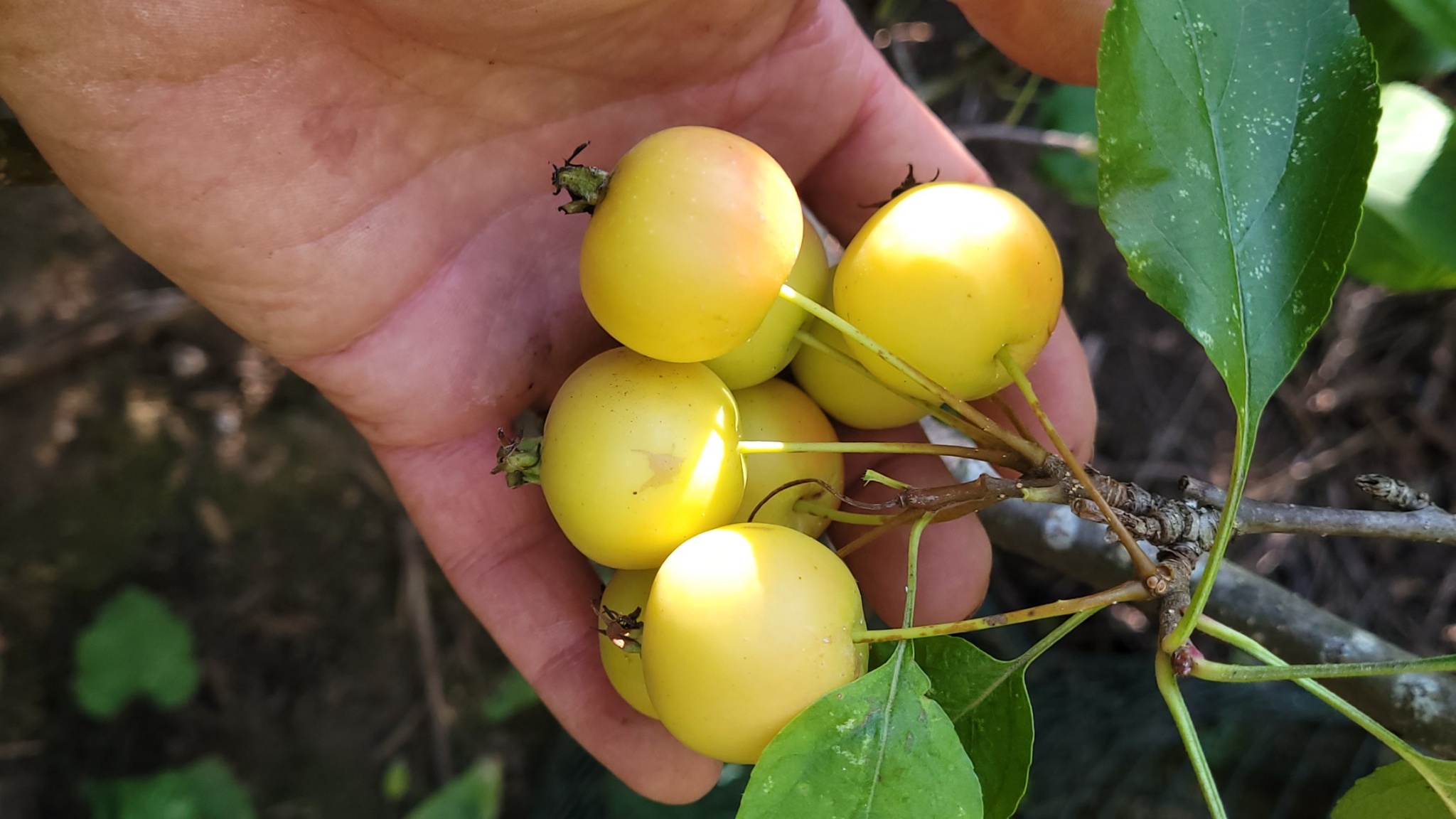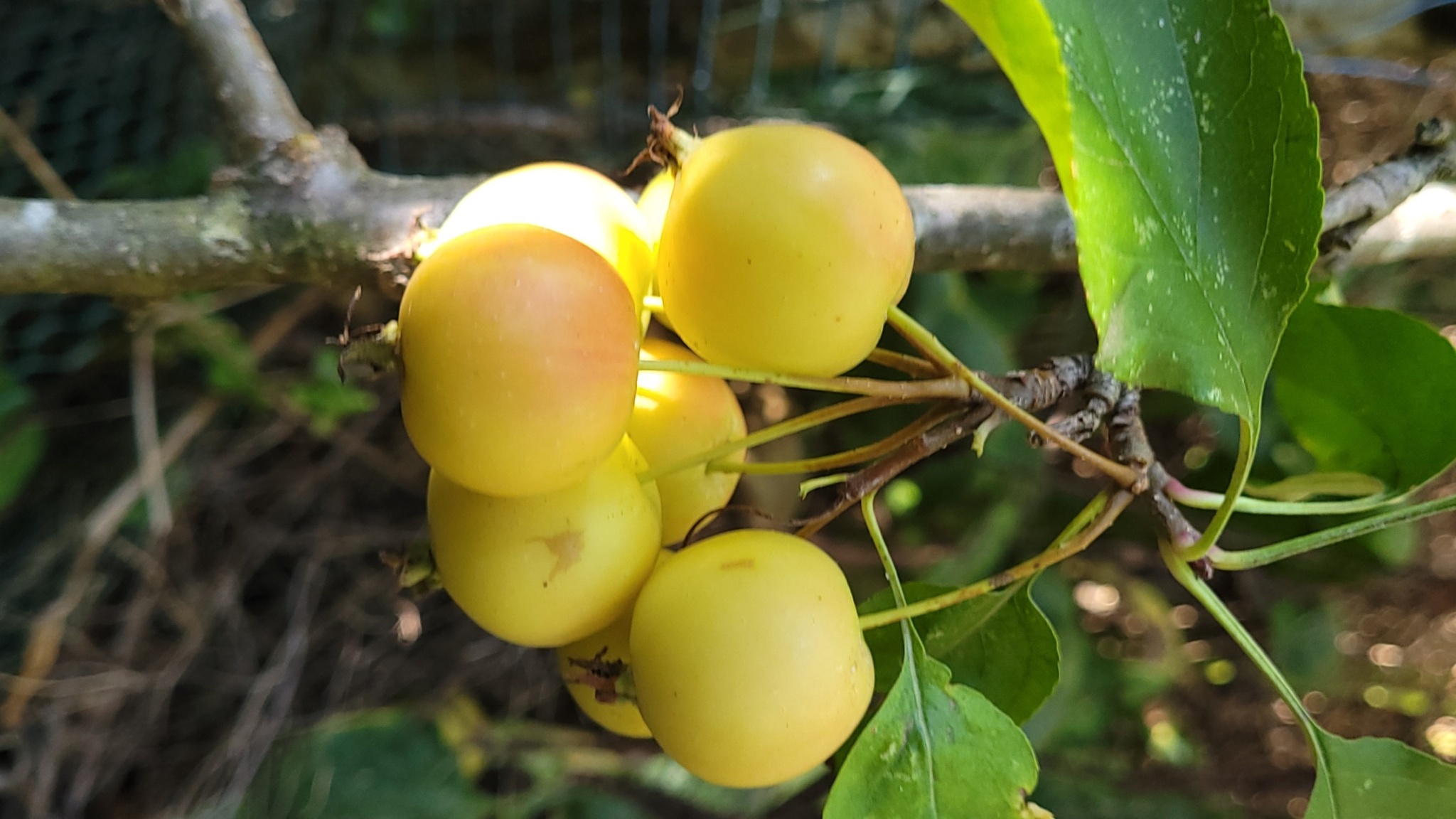This thread got me inspired to share what I've been up to with seedling trees. Photos with descriptions here: https://photos.app.goo.gl/3AQ2.....G41c44kzb7
At the moment I have the following seedling trees in pots or in the ground:
- 69 apples. Parent apples are Golden Delicious, Opal, Ambrosia, Cosmic Crisp, Sugar Bee.
- 30 native madrone (Arbutus menziesii)
- 7 hardy bananas, variety "Ice Cream Banana". Just for fun.
- 5 persimmon - Fuyu and Hachiya
I expect at least half of them to die or be so riddled with disease that I kill them. Although I have found that many seedlings will be sickly for a while, then suddenly become healthy. They probably became strong enough to fight off the diseases? I will be looking to get rid of some of my duplicates in the fall (madrone, banana), let me know if you're interested.
My "2nd batch" of seedlings are from 2014, and one of the grafts is fruiting for the first time this year. Sorry the photo won't rotate.
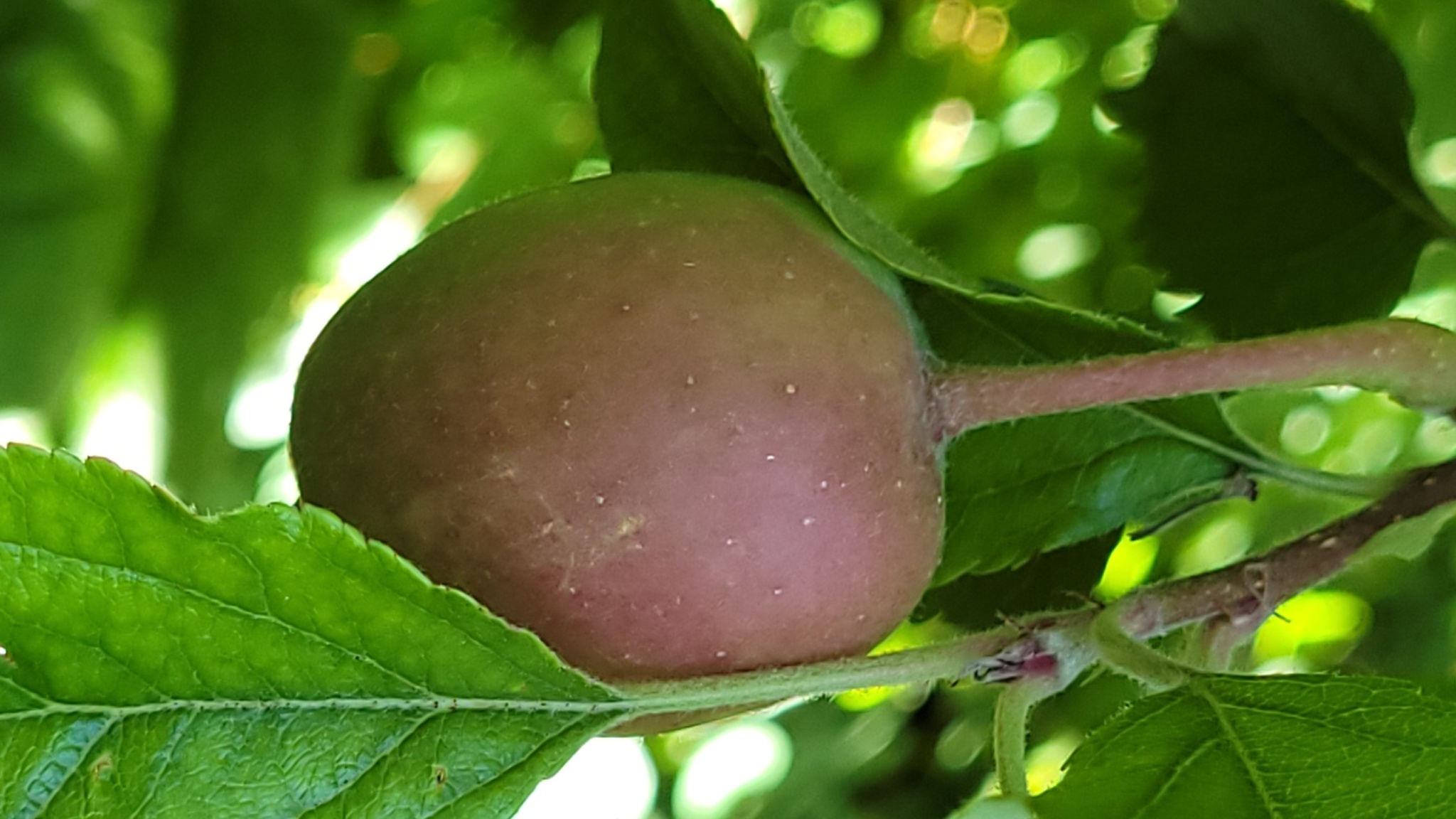
Some of the 41 seedlings I grew this year (Cosmic Crisp, Sugar Bee). In the fall I will put them in the ground, where I will maintain them as "large shrubs" until I determine if they are worth keeping. If so I will graft them onto my existing trees. I have them in grow bags in large pots so that I can put them on our deck where there are fewer slugs, and also provide protection from wild rabbits. It also makes it easy to rotate them, and to move them in or out of sun depending on the weather and their growth stage.
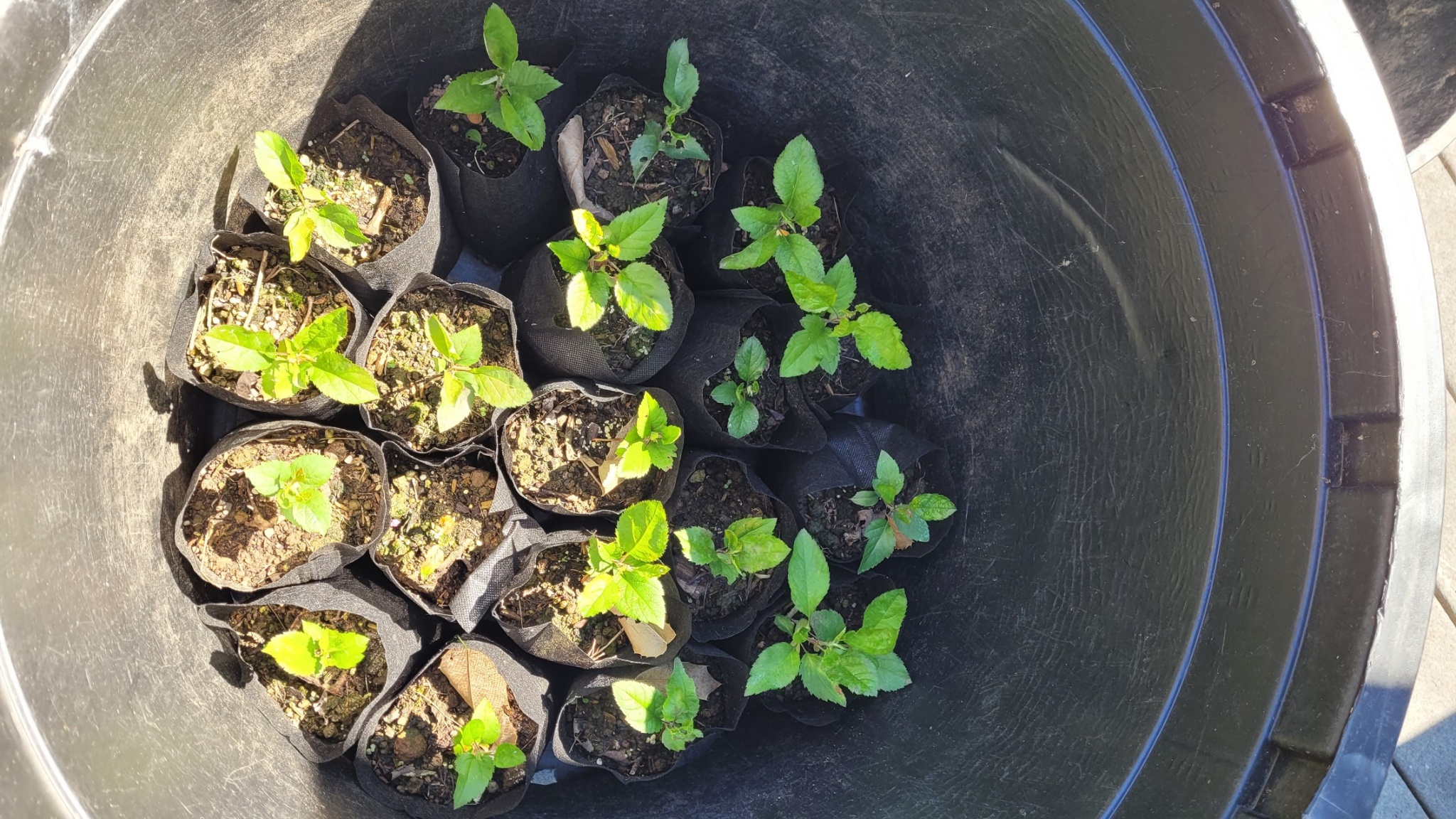
One of my seedlings from 2014. I had them in pots for 9 years and was also cutting scions from them, so they are fairly stunted. I finally put them in the ground this spring. This one ("Ambrosia 8") has an interesting leaf shape. I am surprised that the leaf shape and color varies quite a bit, even from the same parent variety.

Tiny bananas
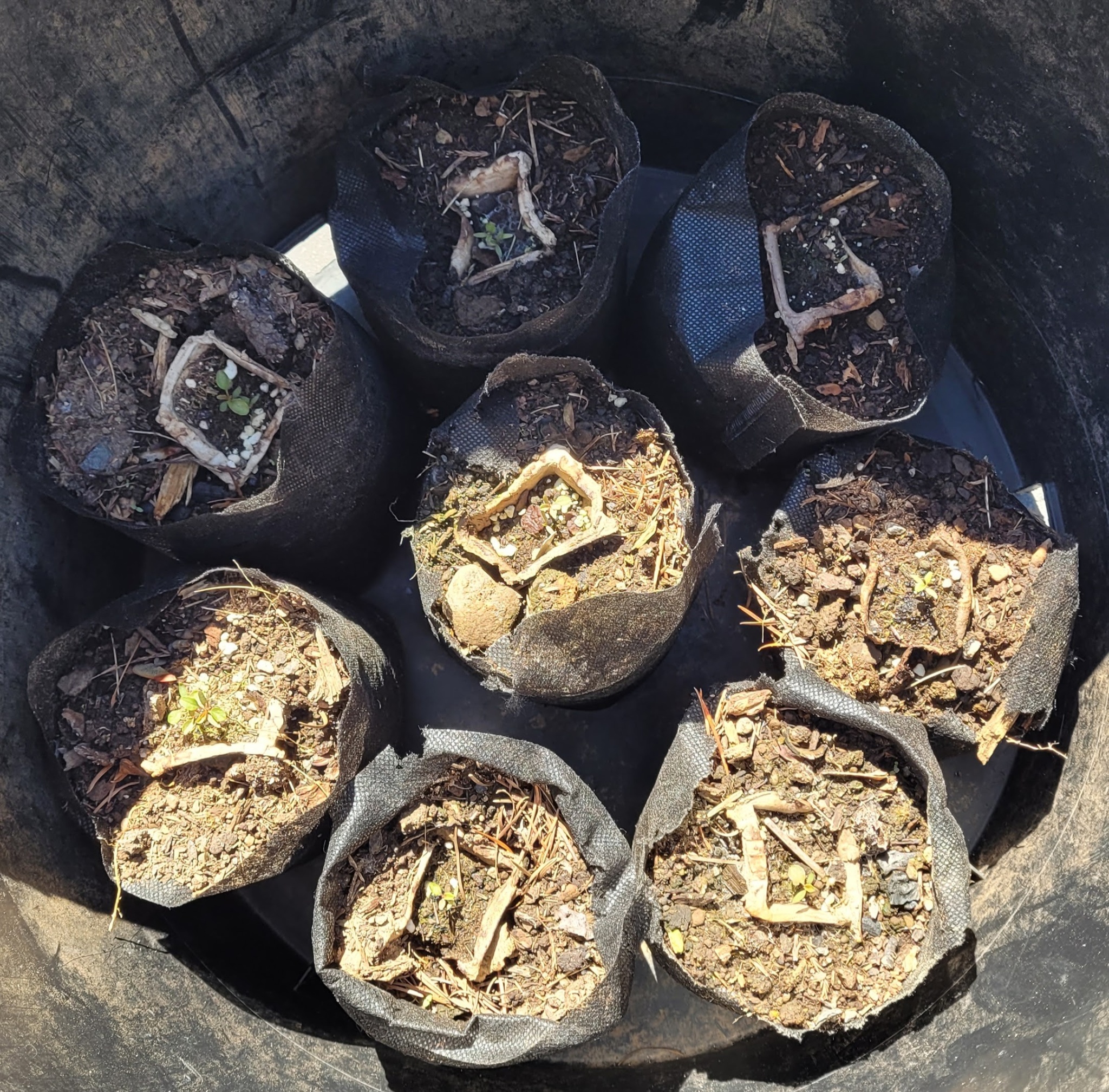
Madrone/arbutus. To replace my bigleaf maple that died in the summer heat.

Fuyu persimmon. I think I should have cracked the shell, as was discussed in the thread that I referenced at the beginning. After I took this photo I was able to pull the shell off a couple of the seedlings.
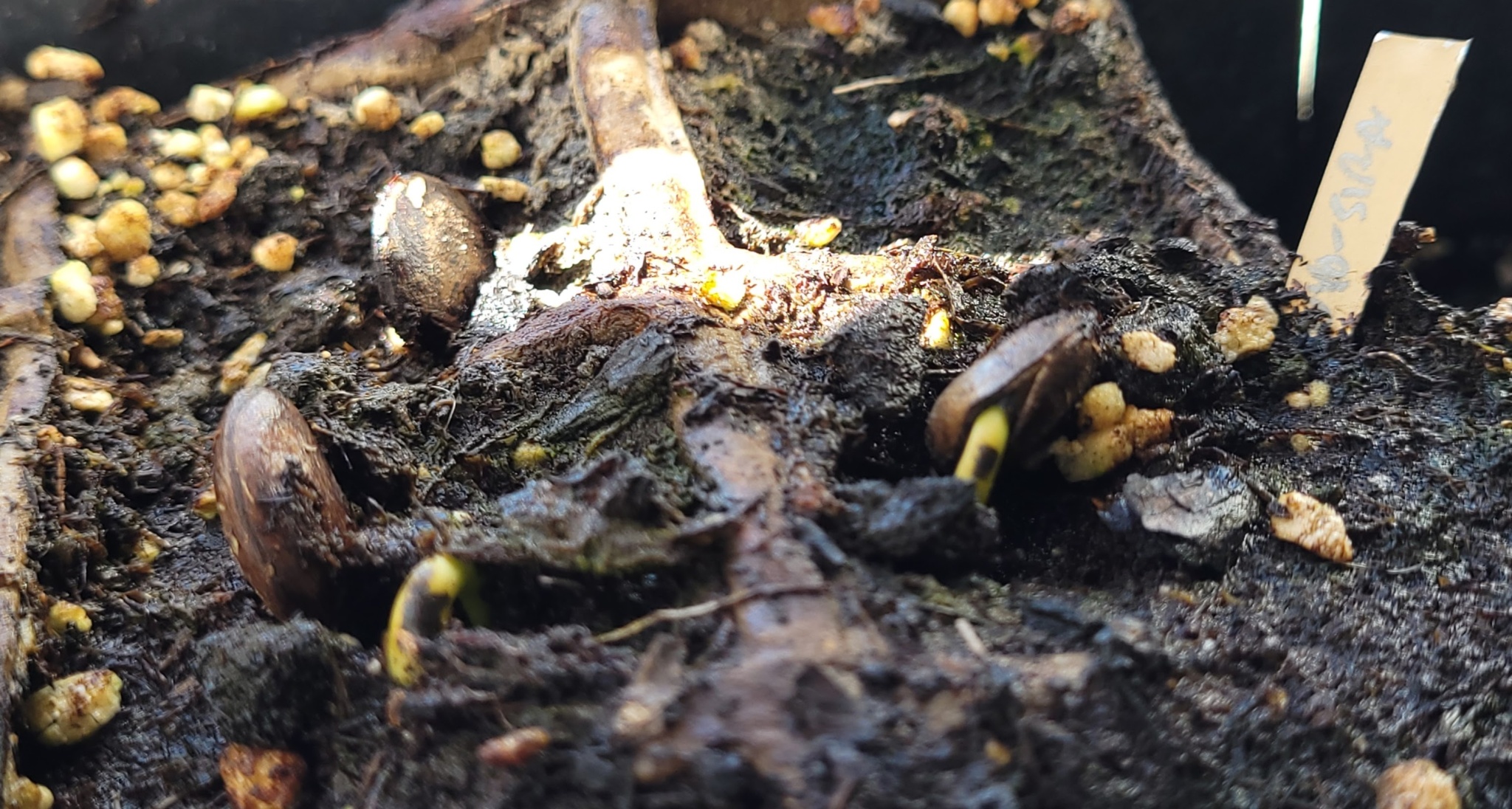
I will add to this thread as things progress in the future.
First apple from my "Opal 6" seedling. A bit small, but looks nice. Not quite ripe yet. This one is grafted, but I put the parent in the ground.
In total I put 54 seedlings in the ground this year. They are fairly closely spaced. My plan is to keep any that look promising and kill the rest.
Maybe someday i will host a tasting event in my driveway :-).
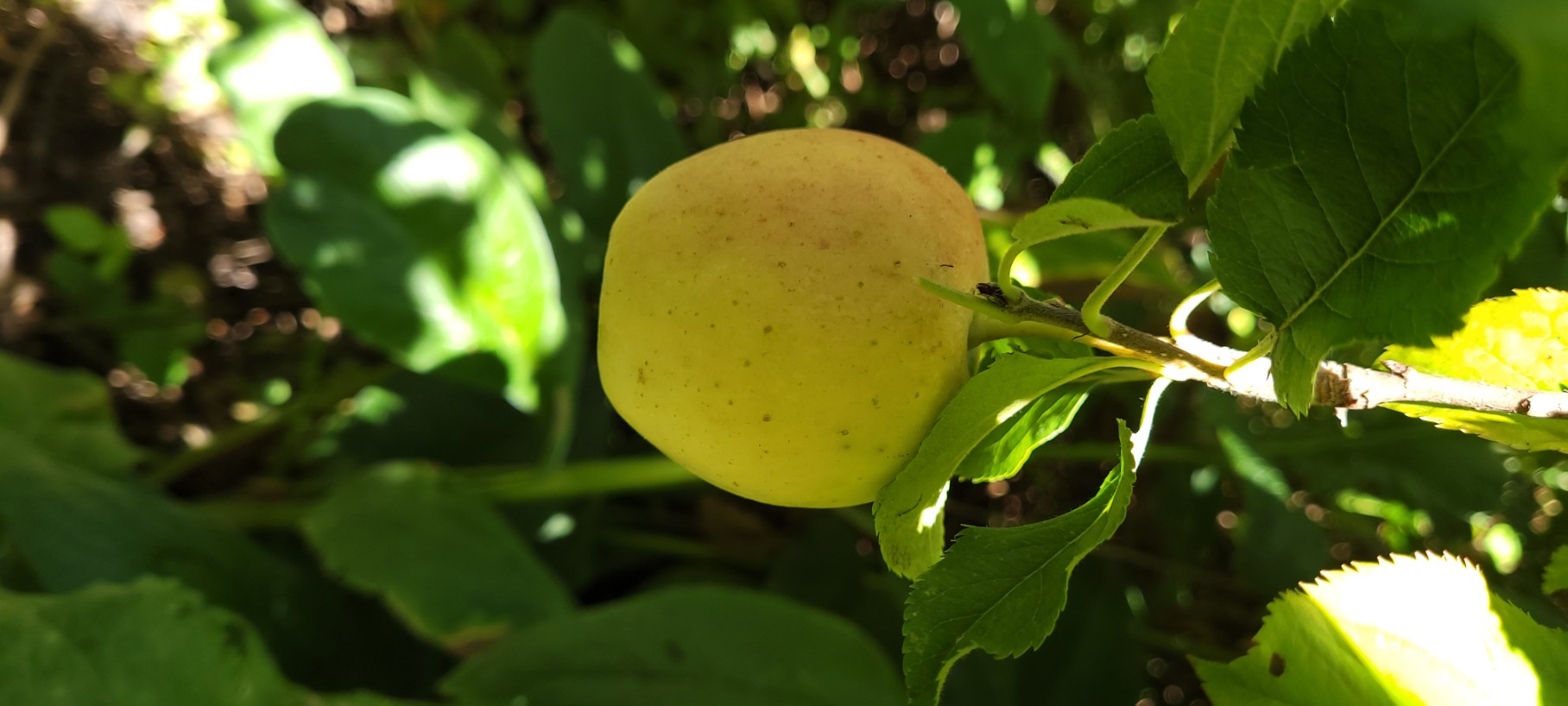
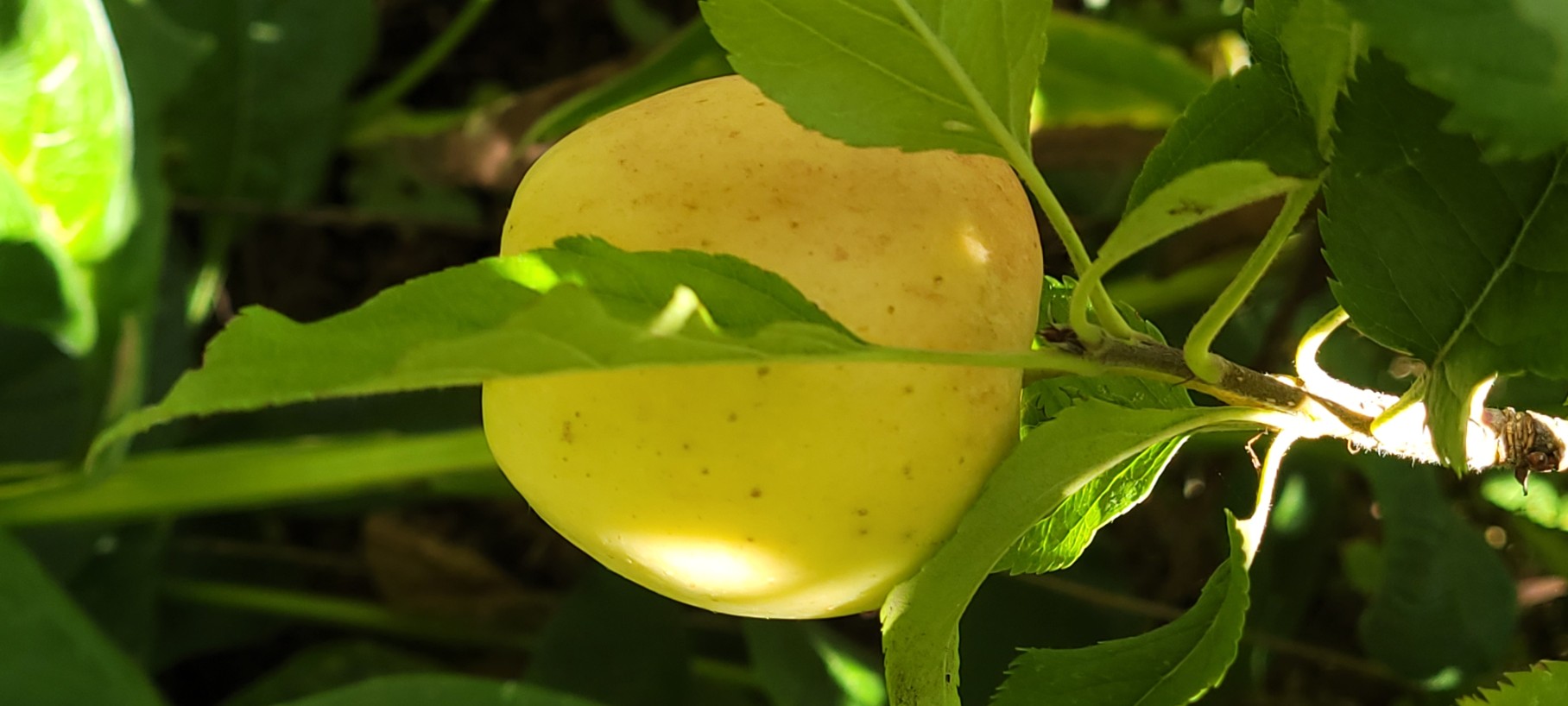
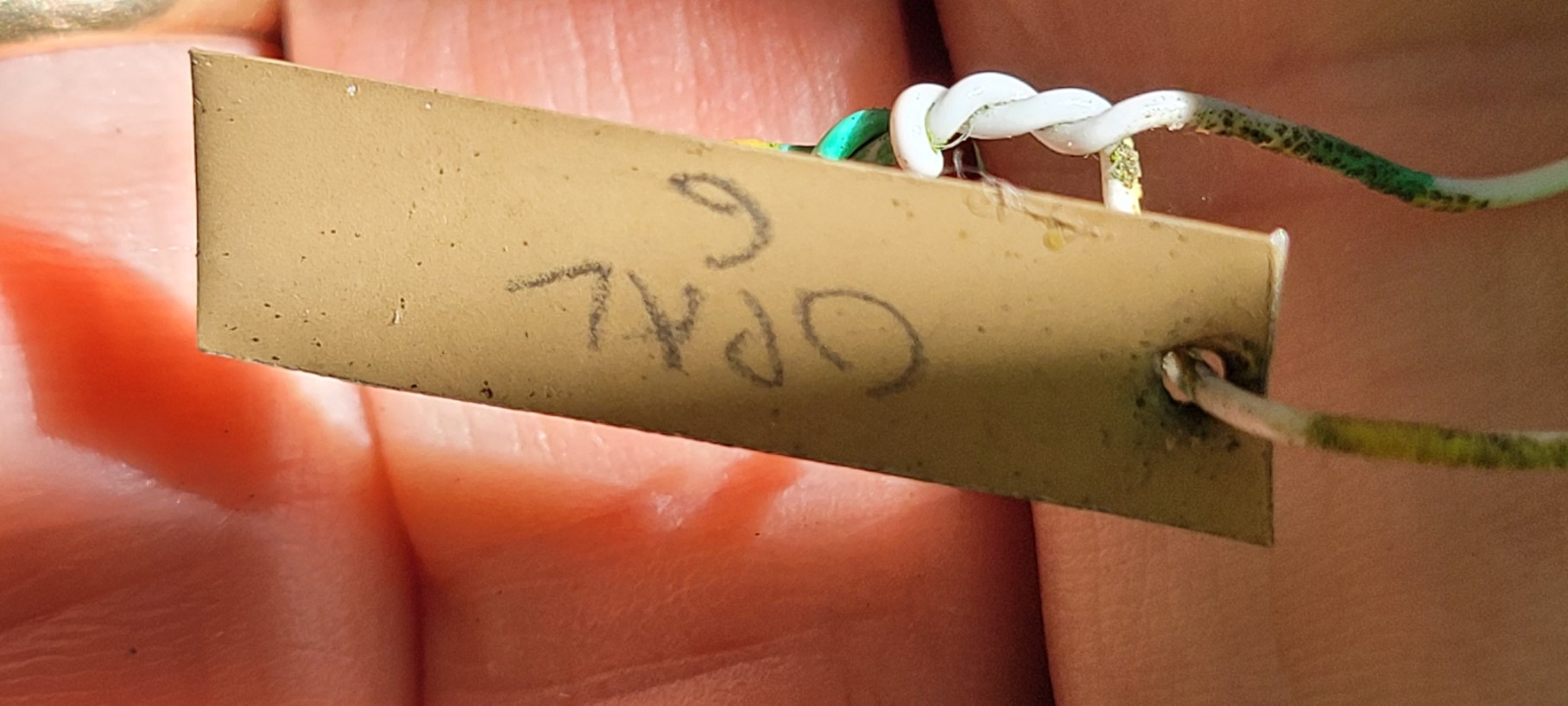
I have done a bit of reading up on Parthenocarpic pear experimentation done in California during 1970 and 1971. Apparently at least some cultivars such as 'winter nellis' that normally need a pollinator to fruit can still be induced to fruit without pollination in treatments with Gibberellin spraying. The final results are seedless. That's one way of escaping codling moth the organic way, or is this just applicable for pears and not apples?
At least that's something being tested out on a very limited basis right now and a few years back at my house where I inter-graft pears and apples. The apples tried so far are not very many great cultivars like the kinds you breed. If I can find larger apples worth eating and if they can be working well on my hybrid Chinese pear like some other smaller apples have then "if" they, as far as the seeds are concerned, stay viable then it means I answered my original question of how Parthenocarpic pear production differs from Parthenocarpic apple production. (the former are seedless, the latter might have seeds)
It's technically a breeding development possibility (in Parthenogenesis) that may be useful to trial almost clone-like features from an apple that's almost good except you might want to tune out some minor variables like apple browning, like the selection of a mutation being noticed from a branch, or a new sport.
The method might be possible using cultivars noted for full time high levels of Gibberellins (ie. GA3). The cultivar 2-2-40 (50% chinese pear 'mishirasu') by Peter from his ventures in breeding at Vashon Island WA came across this special GA cultivar by accident about 30 years ago!
This is still rather speculative, but even so, if you have the time that it's going to take to prove this out, then in the long run we are doing what students have problems dealing with long term. For example Peter sold his farm and passed away a long time ago. Good luck !!
Rooney said
I have done a bit of reading up on Parthenocarpic pear experimentation done in California during 1970 and 1971. Apparently at least some cultivars such as 'winter nellis' that normally need a pollinator to fruit can still be induced to fruit without pollination in treatments with Gibberellin spraying. The final results are seedless. That's one way of escaping codling moth the organic way, or is this just applicable for pears and not apples?At least that's something being tested out on a very limited basis right now and a few years back at my house where I inter-graft pears and apples. The apples tried so far are not very many great cultivars like the kinds you breed. If I can find larger apples worth eating and if they can be working well on my hybrid Chinese pear like some other smaller apples have then "if" they, as far as the seeds are concerned, stay viable then it means I answered my original question of how Parthenocarpic pear production differs from Parthenocarpic apple production. (the former are seedless, the latter might have seeds)
It's technically a breeding development possibility (in Parthenogenesis) that may be useful to trial almost clone-like features from an apple that's almost good except you might want to tune out some minor variables like apple browning, like the selection of a mutation being noticed from a branch, or a new sport.
The method might be possible using cultivars noted for full time high levels of Gibberellins (ie. GA3). The cultivar 2-2-40 (50% chinese pear 'mishirasu') by Peter from his ventures in breeding at Vashon Island WA came across this special GA cultivar by accident about 30 years ago!
This is still rather speculative, but even so, if you have the time that it's going to take to prove this out, then in the long run we are doing what students have problems dealing with long term. For example Peter sold his farm and passed away a long time ago. Good luck !!
Thanks Rooney. That is all way over my head but if what I'm doing can assist you somehow, please let me know.
I do wonder about the seeds from the "Tolowa Dunes" apple. I ate 6 apples and found only about 6 viable-looking seeds among all of the apples. Then I lost them in the refrigerator for 2.5 years. I attempted to sprout them this spring. Two sprouted, but one died. The lone survivor was about 3" tall when I forgot to water it on one of those super hot days and it too died. Or perhaps it had some disease. I guess I'll have to go back to Tolowa Dunes someday. Or maybe someone in this forum will visit it :-). But anyway the parent tree is all by itself, at least a few miles from any other farms or homes which may have an apple tree or two. And I did not see any other wild apple trees in the park. So I'm curious about pollination, fruiting and seeds when a tree is very isolated.
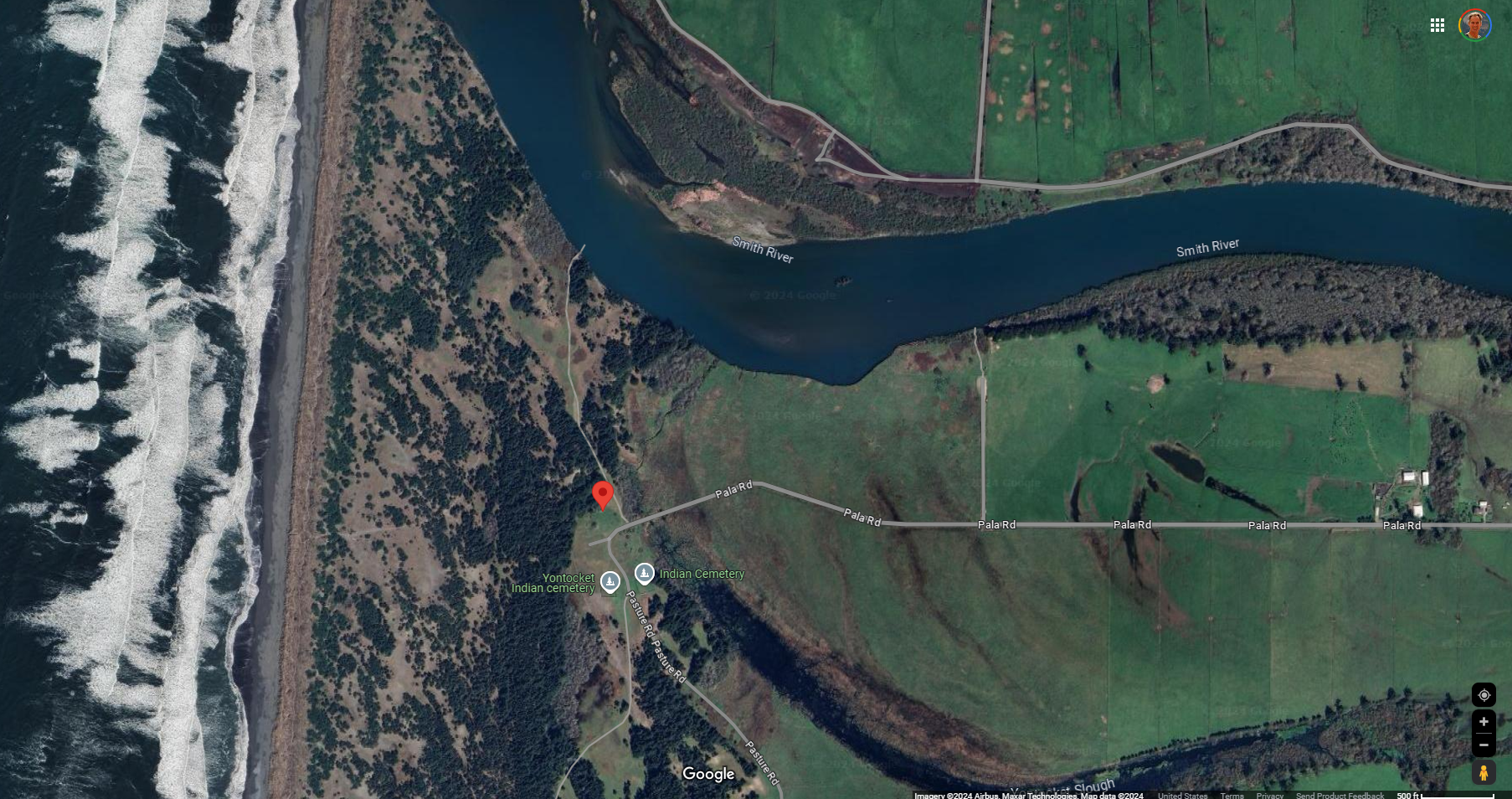
Malus Fusca is common so before you try and satisfy the curiousness you have to investigate pollinators that far down at least know (before next time you go) that sometimes M Fusca is hard to find. Since I know where you live the first thing you might want to do then is learn how often times that Fusca trees also lack fruit to make your pollinators that much harder to find. For example there are a few Fusca trees located at the near NE corner of the fire hall and just on the borderline side of Dog Park. Last week I found two fruits on three trees there.
I know you will investigate or at least take this into consideration about the fire hall because your a curious guy (as am I) and the price of gas is high.
Originally you posted and offered madrone seedlings (arbutus menziesii). Just like you I also had some once. It's hard to tend to watering schedules so you lost your apple seedlings but I lost my madrones after a few years due to my neighbors lawn mower. They do look pretty cool along an edge of a park or the seashore. The wood must be the most dense I have ever seen. I pulled one from that area on your map after a lighting strike and a storm. Pruned down by a strike and leaning over is pretty amazing!
Rooney said
Malus Fusca is common so before you try and satisfy the curiousness you have to investigate pollinators that far down at least know (before next time you go) that sometimes M Fusca is hard to find. Since I know where you live the first thing you might want to do then is learn how often times that Fusca trees also lack fruit to make your pollinators that much harder to find. For example there are a few Fusca trees located at the near NE corner of the fire hall and just on the borderline side of Dog Park. Last week I found two fruits on three trees there.I know you will investigate or at least take this into consideration about the fire hall because your a curious guy (as am I) and the price of gas is high.
Originally you posted and offered madrone seedlings (arbutus menziesii). Just like you I also had some once. It's hard to tend to watering schedules so you lost your apple seedlings but I lost my madrones after a few years due to my neighbors lawn mower. They do look pretty cool along an edge of a park or the seashore. The wood must be the most dense I have ever seen. I pulled one from that area on your map after a lighting strike and a storm. Pruned down by a strike and leaning over is pretty amazing!
I got a "native apple" from a friend which I assume is Malus fusca. It always flowers but has never produced fruit. But I use it for grafting.
I'm not familiar with the fire hall that you speak of. But there are a LOT of fruit and nut trees near my work in Hazel Dell. There are many nut trees in the dog park, and I have collected a lot of nuts from there because there tend to be very few squirrels in a dog park! At home we have a dog but the squirrels still get all my nuts (and some of my mason bees, aargh!).
I grew more madrone this spring in case the ones in the ground succumbed to animals, but fortunately that did not happen. I did kill one due to overwatering I think. All the seedlings from this spring are spoken for, but if there is interest I could grow more next year since I kind of know what I'm doing now. IMHO madrones will become more important in this area as the hot dry summers get worse and worse. I've lost several young big leaf maples, and I have been noticing a dramatic increase in dead alders. Both big leaf maple and madrone are important for mason bees.
I tried the "Opal 6" tonight. It wasn't quite ripe but I'm busy the next few days and I'm worried about animals getting it.
Flavor-wise I'd give it a 6/10. Texture is a bit mealy, but that could be due to being unripe.
The flesh is somewhat yellow which is interesting. Also quite firm, but again isn't ripe.
I'll definitely keep watching it in the coming years.
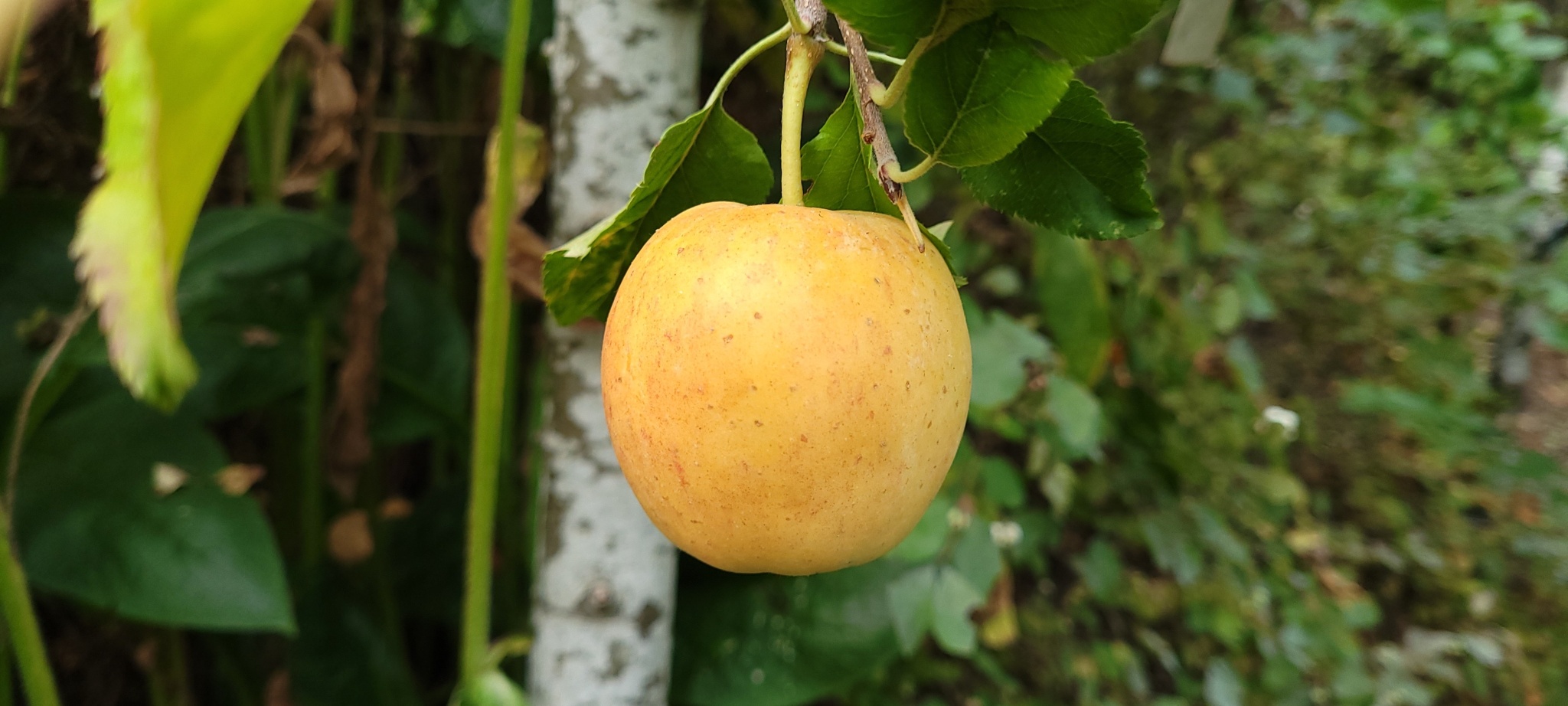
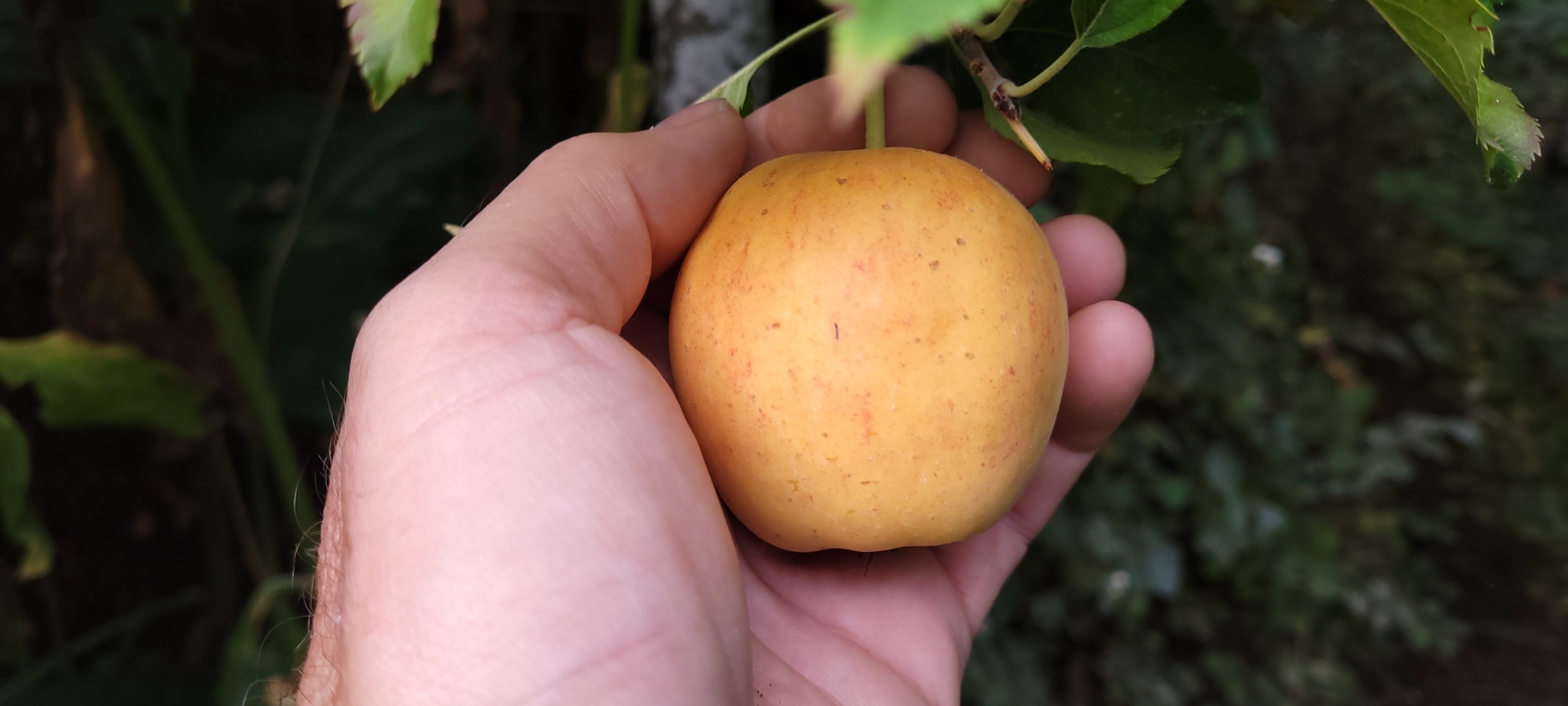
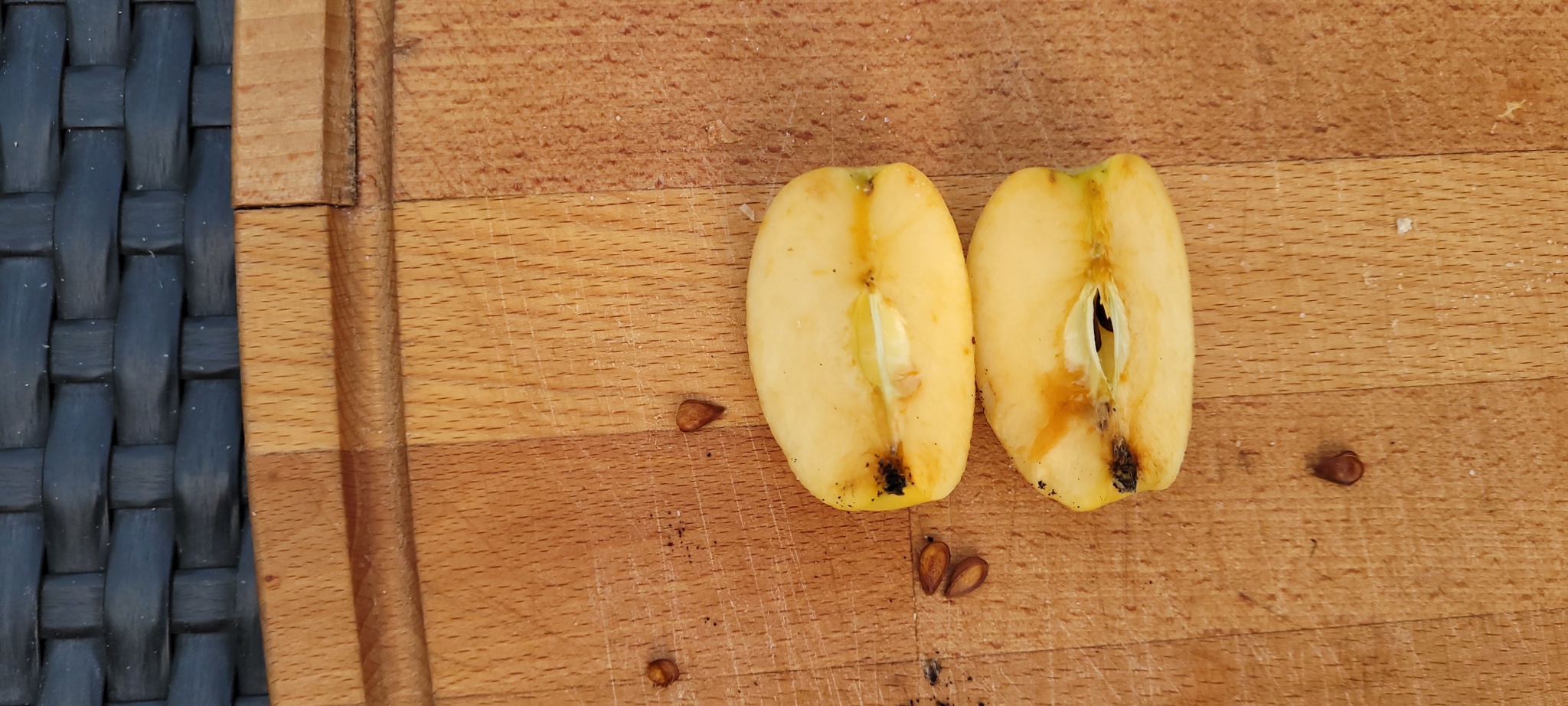
RE: -In the start of Dave's topic tags seedlings|seedling|Apple
- Growingfruit dot org / t / codling-moth
- uploading on picture of my m26
First line;
You (meaning Dave) put a great emphasis on apple breeding because through the internet universal topic tags and when advertising to collecting apple seeds for local conditions then I should ask if selecting for insect resistance is something your going about on purpose for?
Line #2;
This user on growingfruit dot org lists cultivars he observes to be having codling moth resistance.
Line #3;
Is my attached file and an example of the only apple that I have that the codling moths go for (as seen in the formation of a cavity at the bottom) and have not yet succeeded.
The "growingfruit" user does not include pictures like Dave's (most recently loaded) and mine as attached does. So Dave, as an idea lets compare picture notes more explicitly....
The m26 has solid flesh all the way into the seeds that seem to be adapted to prevent the codling moth larvae from reaching any livelihood, being the seed as an important staple of surviving. Your picture of opal-6 seems to show that a moth larvae hatched and also got terminated. My m26 is a terrible apple to eat but compared to your opal-6 I am still slightly confused and not knowing for sure what's being said?
I will agree 100% if breeding for local non spray applications for residential areas is a good idea, and that I'm all for, but only because apples even west of the Cascades suffer one thing the most. ..Insect damage and not fungal/bacterial organisms. Apples are adapted very well compared to prunus like things such as peaches/apricots etc; other than the things I just said.
Update on my seedlings. 53 are still living. Several made it from seed to 3' tall in one growing season.
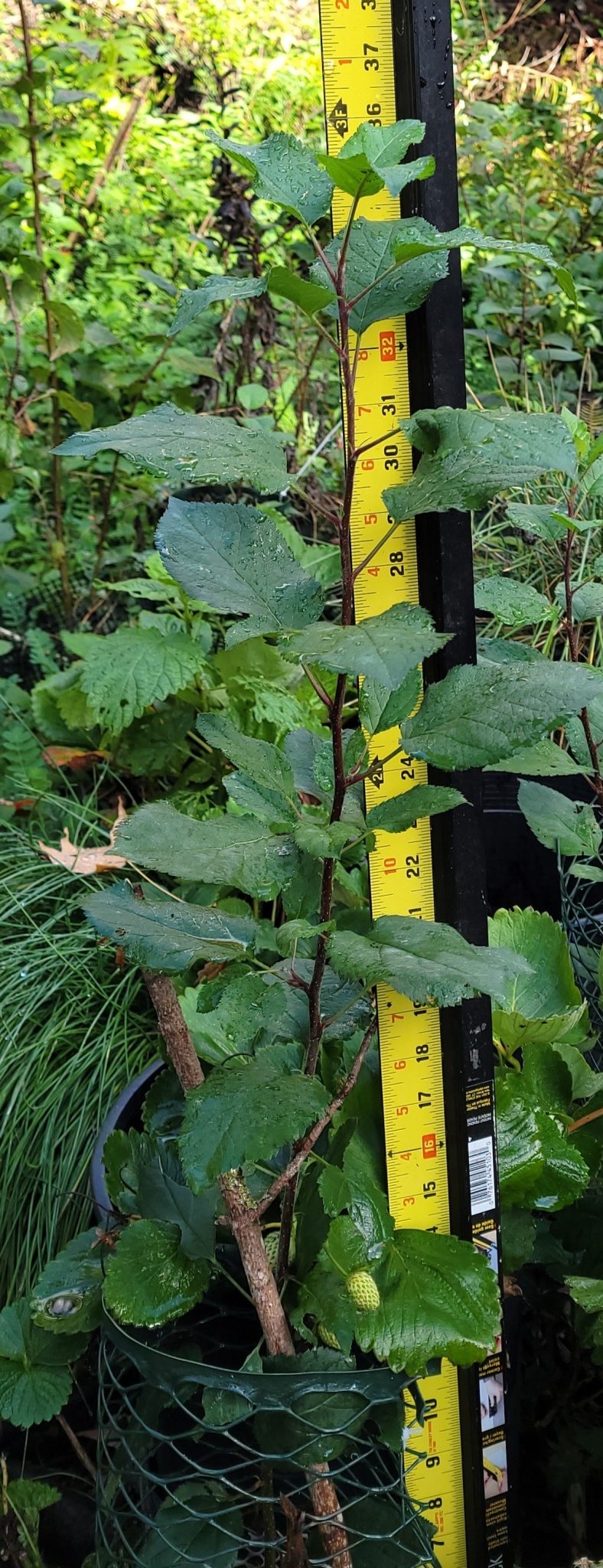
One seems to have a bit of fall color.
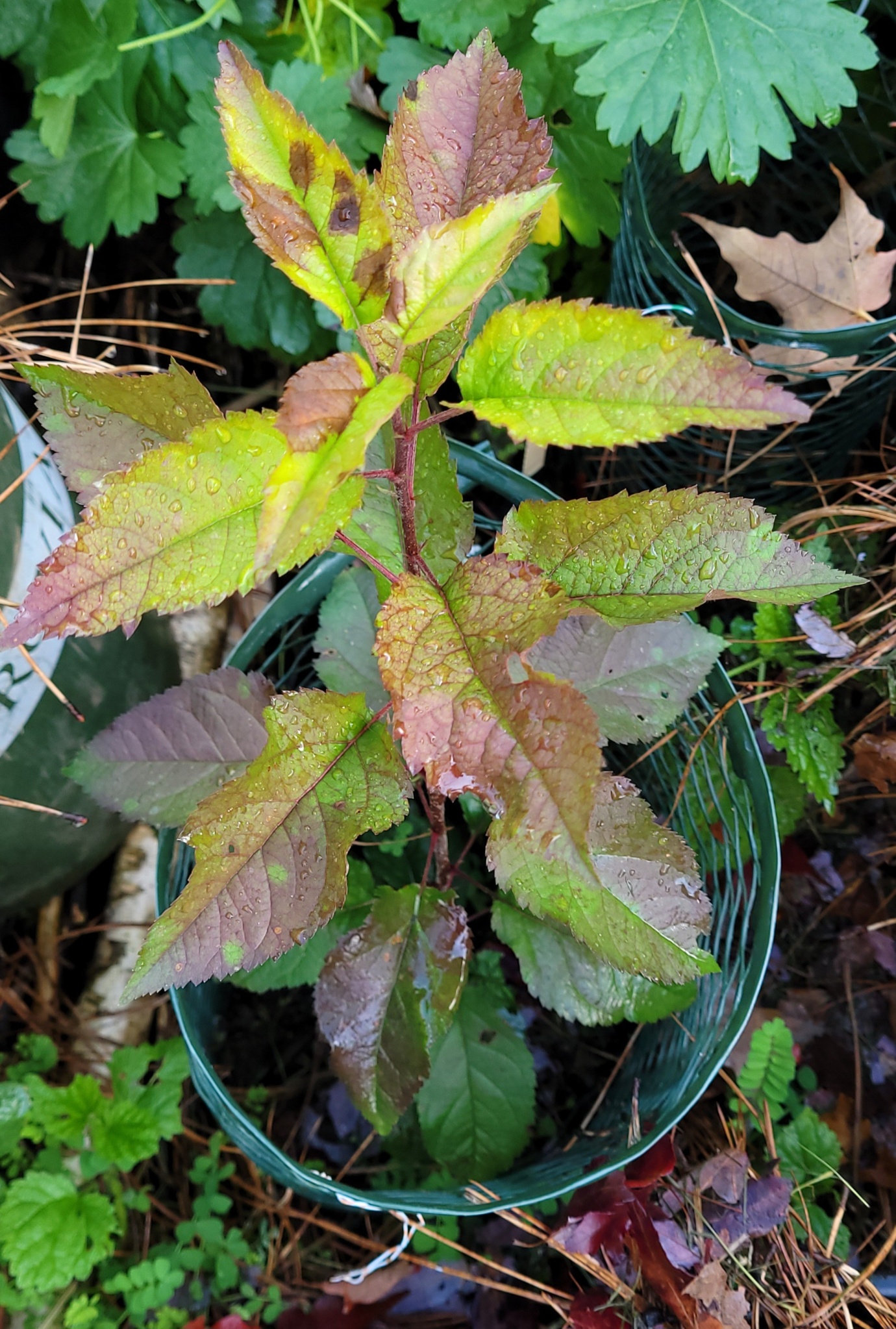
My seedling nursery. I wish it got more sun, but this is the only space I have available right now. I have to protect all my tender plants from rabbits, thus all the plant protection. In the background left to right are Imperial Epineuse plum, a bit of a grape, several hazelnuts, several pineapple guava (Feijoa), native Oregon white oak, and loquat. In between the apple seedlings (which are in the ground) are various things in pots, including my male hardy kiwi. I consolidated all of my tender plants which needed irrigation into one spot. When they are in bloom, I move my male kiwis closer to the females.

Idyllwild
jafar
Marsha H
Viron
1 Guest(s)

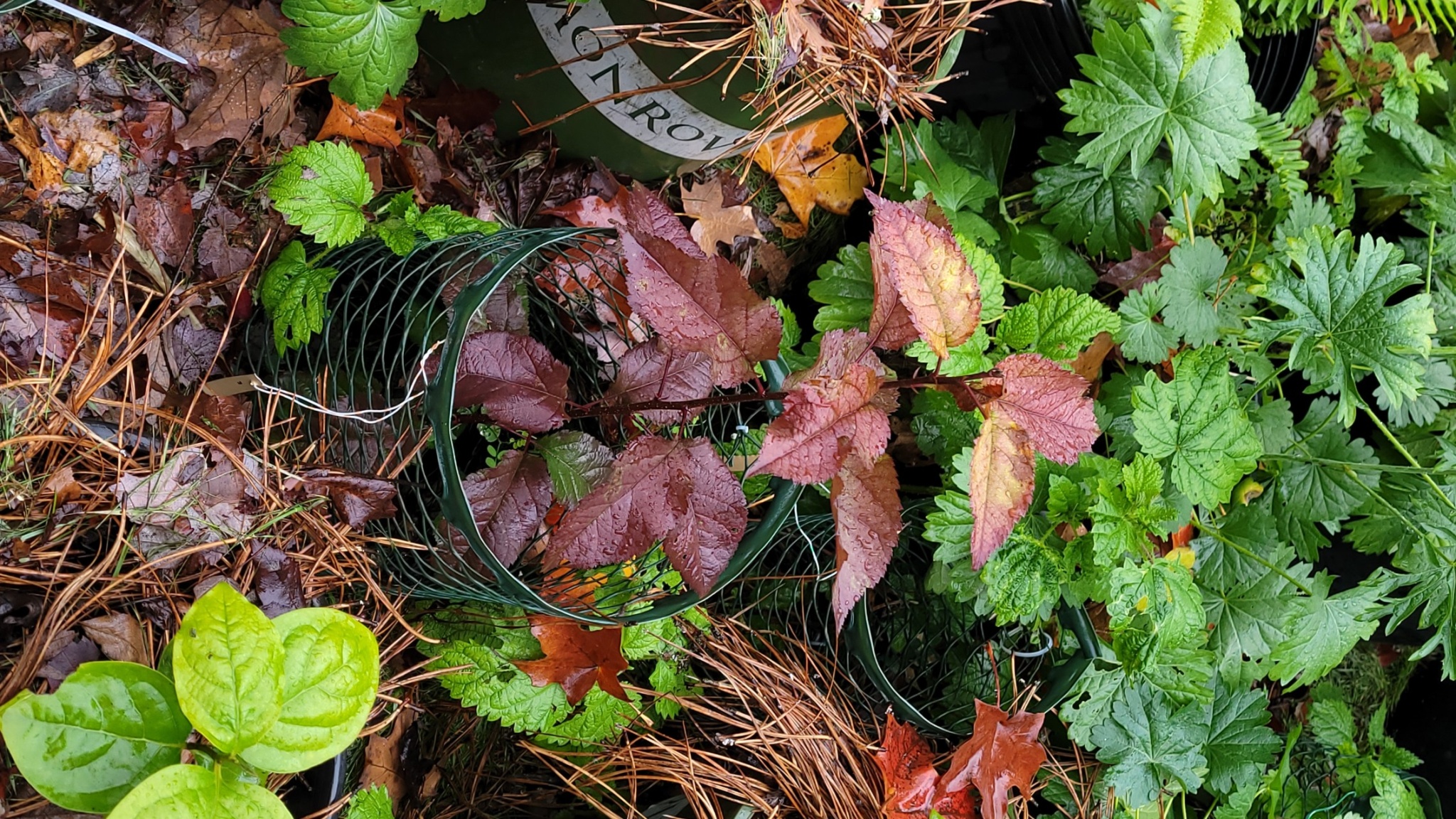
 . And BTW its parent is Sugar Bee.
. And BTW its parent is Sugar Bee.
